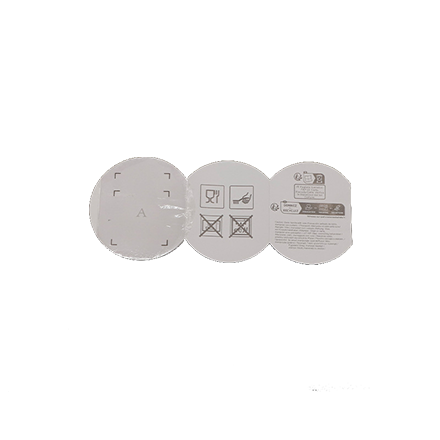Custom Adhesive Labels: Comprehensive Guide
What Are Custom Adhesive Labels?
Custom Adhesive Labels are pressure-sensitive materials designed for product identification, branding, or informational purposes. These labels consist of three primary layers: the face stock (printing surface), adhesive layer (with bonding strength ranging from 0.5 N/25mm to 15 N/25mm depending on application), and liner (protective backing). Modern label materials demonstrate 98-99.5% opacity for optimal print visibility and maintain dimensional stability within ±0.2% under standard humidity conditions (50% RH at 23°C).

Key Technical Characteristics
Adhesion Performance: Initial tack values range from 500-2000 g/cm² (PSTC-6 method) with peel adhesion between 2-50 N/inch (ASTM D3330)
Temperature Resistance: Standard labels withstand -20°C to 80°C, while specialty formulations endure -40°C to 150°C (UL/CSA certified)
Print Resolution: Supports up to 4800 dpi with color gamut coverage exceeding 90% of Pantone colors
Material Thickness: Ranges from 50-250 microns, with tensile strength between 50-300 N/cm² (ISO 527-3)
Chemical Resistance: Meets ASTM D543 standards for resistance to alcohols, mild acids, and alkalis
Application Scenarios
Industrial Applications
In manufacturing environments, Custom Labels demonstrate 10,000+ hour UV stability (ASTM G154) for outdoor equipment identification. Barcode labels achieve ANSI Grade A scanability at distances up to 15 feet with 20 mil X-dimension. Chemical-resistant variants maintain legibility after 500+ hours of exposure to industrial solvents (per ASTM D471).
Retail Packaging
Premium cosmetic labels employ 1.5-3.0 gsm hot foil stamping with registration accuracy within ±0.1mm. Tamper-evident labels feature 200-400% stretchable materials with fracture patterns visible at 50x magnification. Variable data labels support 300+ characters/inch² in QR codes for product tracking.
Food & Beverage
Direct-food-contact labels comply with FDA 21 CFR 175.105 and EU 10/2011 regulations, with migration limits below 0.01 mg/kg. Cryogenic labels maintain adhesion at -196°C (liquid nitrogen temperatures) with 95%+ retention of original bond strength. Wet-strength labels achieve 24-hour submersion resistance (ASTM D1583).
Healthcare
Medical device labels meet ISO 10993-5 cytotoxicity requirements with Class VI USP plastic certification. Autoclavable variants withstand 134°C sterilization cycles while maintaining ≥90% original adhesion (ASTM F88). RFID-enabled labels operate at 13.56 MHz with read ranges up to 2 meters through packaging.
Maintenance and Care Procedures
Storage Conditions
Optimal storage maintains 20-25°C with 40-60% RH (per TAPPI T402). Rolls should be stored vertically with ≤5° deviation from perpendicular to prevent edge curl. Unopened materials retain performance characteristics for 24 months when protected from UV exposure (measured per ASTM D529).
Handling Protocols
Use cleanroom gloves with ≤100 particles/ft³ (ISO Class 5) when handling sensitive labels. Dynamic unwind tension should be maintained between 50-150 g/cm (measured with tension meters like the DFE-3). For thermal transfer printing, maintain ribbon tension at 20-40 N (FTS-100 measurement standard).
Surface Preparation
Surface energy must exceed 38 dynes/cm (measured with Dyne test pens) for proper adhesion. Contamination levels should be below 3 µg/cm² (per IEST-STD-CC1246). For low-energy surfaces, apply primers with ≥50% solids content and cure for 2-5 minutes at 65°C before labeling.
Application Techniques
Apply pressure of 40-60 psi for 0.5-2 seconds using applicators with 60-80 durometer rubber rollers. For curved surfaces, maintain application speed below 50 cm/sec to prevent edge lifting. Post-application dwell time of 24-72 hours achieves 90% of ultimate bond strength (per PSTC-101).
Cleaning Methods
For soiled labels, use isopropyl alcohol (70% concentration) with lint-free wipes applying ≤15 N pressure. Avoid cleaners with >5% aromatic hydrocarbon content. For thermal labels, cleaning frequency should not exceed every 500 prints to prevent head abrasion (measured at 0.1µm wear per cycle).
 English
English

